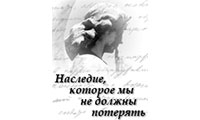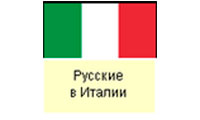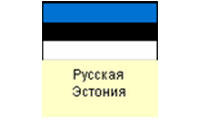Patriarch Alexy II (Ridiger)
Alexy II (secular name Alexei Ridiger; 23rd of February 1929– 5th of December 2008) – the Patriarch of Moscow, the primate of the Russian Orthodox Church (1990–2008). The head of Riga Diocese in 1961–1962, a bishop.
Alexei Ridiger was born in Tallinn into the family of Mikhail Ridiger (1902–1964), which had lived in Estonia after the revolution in Russia. He was descended from a Russified Baltic-German noble family that had converted to Orthodoxy as early as the 18th century. From childhood, he was closely connected with the Orthodox faith.
From a young age, Alexei Ridiger served in church as an altar boy, and later as a psalm reader. From 1947 to 1949 he had been studying at the Leningrad Theological Seminary, and then at the Leningrad Theological Academy, graduating in 1953. In 1950, he was ordained a priest and appointed rector of the Church of the Epiphany in the town of Jõhvi, Estonia. From 1957 he served as rector of the Dormition Cathedral in Tartu and as dean of the district. In 1958 he was elevated to the rank of archpriest. After the death of his mother, Elena (née Pisareva, 1902–1959), he decided to take monastic vows. In the spring of 1961 he was tonsured a monk with the name Alexy. On August 23, 1961, he was elevated to the rank of archimandrite, and on September 3 of the same year, his episcopal consecration took place at the Alexander Nevsky Cathedral in Tallinn. He became Bishop of Tallinn and Estonia, with the temporary administration of the Diocese of Riga entrusted to him as well.
Alexy began his archpastoral ministry during a difficult time for the Orthodox Church. The early 1960s were marked by Khrushchev’s persecutions of religion, when churches were again being closed en masse and clergy subjected to persecution. Much effort was required from the bishop to at least mitigate the consequences of such state policy and to protect the Church and its flock as much as possible.
During his brief administration of the Diocese of Riga (1961–1962), he visited the city several times, where he celebrated services in the Holy Trinity Cathedral, the Holy Trinity–St. Sergius Convent, and the Transfiguration Hermitage. The primary concern of the bishop during those years was to prevent the closure of churches. Under his predecessor, Bishop John (Alexeyev), who headed the Riga Diocese in 1958–1961, the Nativity of Christ Cathedral in Riga had been closed and nationalized. The situation at the Holy Trinity–St. Sergius Convent in Riga was also very difficult. The authorities prohibited the admission of new nuns; part of the convent’s land and some buildings were confiscated. The state insisted that the remaining sisters move to the Transfiguration Hermitage, where the nuns of the closed Ilūkste Convent of the Most Holy Theotokos (closed in 1953) had already been transferred. Largely thanks to the efforts of Bishop Alexy (Ridiger), the convent in Riga ultimately was not liquidated.
In 1962, in connection with his new duties in Moscow, at the Department for External Church Relations, Bishop Alexy, at his own request, was relieved of the administration of the Riga Diocese. He continued to lead the Tallinn Diocese for many more years: as diocesan bishop until 1986 (from 1964 as archbishop, from 1968 as metropolitan, and in 1971 granted the right to wear a second panagia), and later, after his transfer to Leningrad, concurrently—up to 1992, when he was already Patriarch.
Since the 1960s, he had been involved in the central administration of the Russian Orthodox Church (ROC). From 1964 to 1986 he served as Chancellor of the Moscow Patriarchate, a position that also entailed permanent membership in the Holy Synod. In 1984 he received the degree of Doctor of Theology for his three-volume dissertation Essays on the History of Orthodoxy in Estonia.
In the late 1980s, amid rapidly unfolding changes, Metropolitan Alexy’s authority grew not only in ecclesiastical but also in public circles, and in 1989 he became a People’s Deputy of the USSR. On June 7, 1990, at the Local Council of the Russian Orthodox Church, he was elected Patriarch of Moscow and All Rus’. He entered history as Patriarch Alexy II.
During the primacy of Patriarch Alexy II, many of the most significant events in the life of the Russian Orthodox Church took place: the atheistic communist regime in Russia fell; the USSR ceased to exist; and in Russia and other former Soviet republics there was (and continues to be) a strong religious revival and a return of many people to the Orthodox faith. Over those years, numerous churches were restored or newly built, and many monasteries were reopened. The Church once again began to enjoy state support.
In 2006, at the invitation of Latvian President Vaira Vīķe-Freiberga, Patriarch Alexy II visited Riga. During his three-day stay in the Latvian capital (May 27–29), he celebrated services at the Nativity of Christ Cathedral, the Holy Trinity Cathedral, and the Church of the Annunciation of the Most Holy Theotokos, and met with state officials.
Patriarch Alexy II was fluent in several languages: Russian, Estonian, German, and, to some extent, English. He was the recipient of many state (both Russian and foreign) and ecclesiastical awards.
He was the author of numerous books and articles (around 500), including Orthodoxy in Estonia (Moscow: Orthodox Encyclopedia, 1999, 703 pp.).
Since 1993 he had been a full member (academician) of the Russian Academy of Education.
Patriarch Alexy II passed away on December 5, 2008, at his residence in Peredelkino, near Moscow.
Text prepared by Sergey Tsoia.
Sources of information:
1) Латвийская православная церковь 1988-2008 г.г. Рига: Издание Синода Латвийской православной церкви, 2009. С. 25-26, 91-92, 190-204;
2) Прот. В. Цыпин. История Русской православной церкви. Синодальный и новейший периоды (1700-2005). М.: Издание Сретенского монастыря, 2007. С. 645-652.
3) Использованы также некоторые дополнительные источники из интернет-ресурсов.







